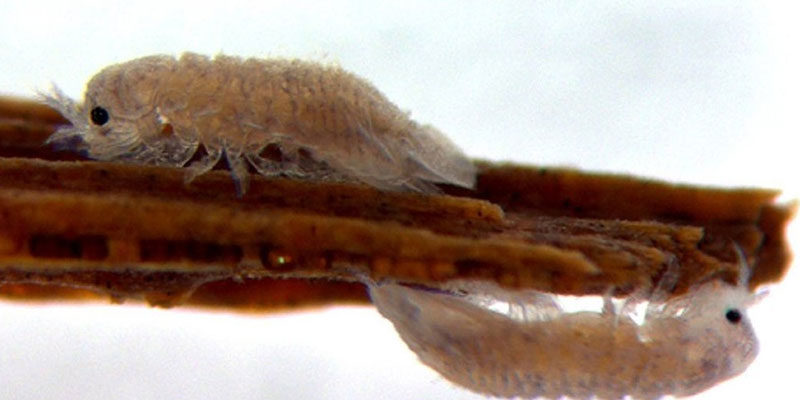Studying crustacean digestion to find greener biofuels
-
Case study
- Environmental Sustainability and Resilience
Our research into the digestive system of the gribble - a curious crustacean and the only animal known to have a sterile digestive system - may hold the key to sustainably converting wood into biofuel.

In the long term this discovery may be useful in reducing the amount of energy required for pre-treating wood to convert it to biofuel.
The issue
Pressure is mounting for global action to be taken on climate change. Many countries are rapidly trying to de-carbonise by switching to renewable energy sources such as biofuels.
Woody (lignocellulosic) plant biomass is an abundant renewable material that can be converted into fuel. Because of its availability, it is an attractive alternative fuel source. In particular, using woody plants rather than food crops as a fuel source is preferable because using the latter conflicts with ensuring global food security.
However, wood is wrapped in a tough coating, called lignin, which wraps around the sugar polymers that compose wood. Breaking lignin down requires a lot of energy, which lessens wood's efficiency as a biofuel. Developing a low-energy method of breaking down lignin would significantly improve the sustainability of creating biofuel from woody plants.
The research
Gribbles are small marine invertebrates who perform an important ecological role - eating the abundant supplies of wood washed into the sea from river estuaries. Until now, how they digest lignin has mystified researchers.
Gribbles are the only animal known to have a sterile digestive system. This is very different to other wood-consuming creatures such as termites, which rely on thousands of gut microbes to do the digestion for them.
York researchers studied the hind gut of a gribble and discovered that Hemocyanins – the proteins that make the blood of invertebrates blue - are crucial to the gribble's ability to extract sugars from wood.
Hemocyanins are a group of proteins better known for their role in transporting oxygen in invertebrates in a similar way to haemoglobin in animals. While haemoglobin binds oxygen through its association with iron atoms, giving blood its red colour; hemocyanins do this with copper atoms, which produces a blue colour.
Oxygen is a highly reactive chemical, and gribbles have harnessed the oxidative capabilities of hemocyanins to attack the lignin bonds that hold the wood together.
The researchers discovered that gribbles chew wood into very small pieces before using hemocyanins to disrupt the structure of lignin. GH7 enzymes, the group of enzymes used by fungi to decompose wood, are then able to break through and release sugars.
To determine whether this discovery could be applied to processing biofuel, the researchers pre-treated wood with hemocyanin prior to digestion with cellulases, and assessed its impacts on releasing sugars. This revealed that treating wood with hemocyanin proteins enables the same amount of energy to be released as is currently achieved using expensive and energy-consuming thermochemical pre-treatments.
The outcome
The insights gained from this study may prove useful in developing effective methods for converting wood into low carbon renewable energy source.
The research could take us a step closer to powering our world with wood-generated renewable biofuels.

Neil Bruce
Professor Bruce's expertise is environmental biotechnology, biocatalysis, and biorefining.

Simon McQueen-Mason
Professor McQueen-Mason's research encompasses various aspects of lignocellulosic biorefining and biofuels.

Katrin Besser
Dr Besser's research focuses on enzyme discovery and characterisation for the realisation of efficient liquid biofuel production from plant biomass.
